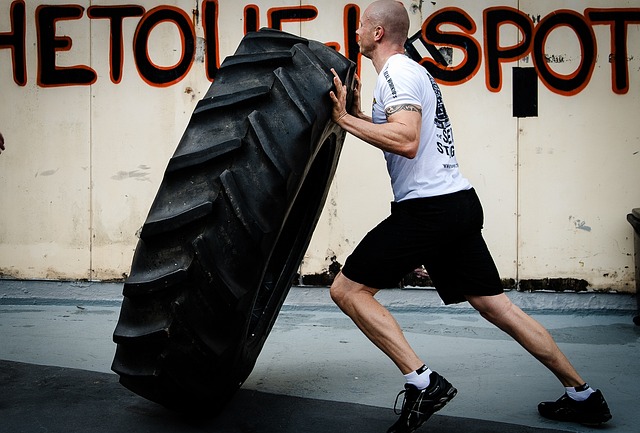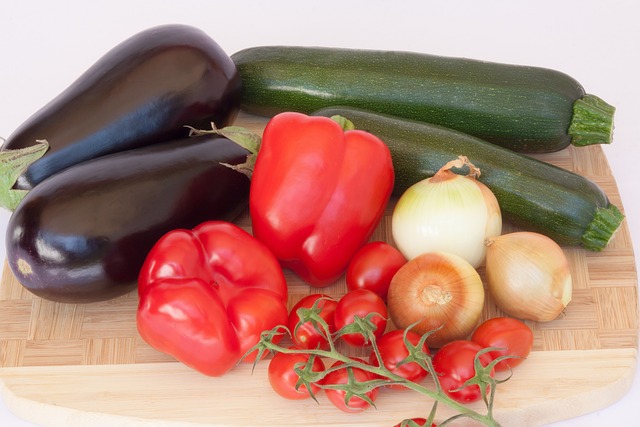The density of bones changes over time. Lifestyle decisions can all help people increase their bone density, like strength training, dietary choices, and weight control.
The bones absorb nutrients and minerals and grow in strength throughout childhood, adolescence, and early adulthood.
However, by the late twenties, a person has hit their peak bone mass, which means they will no longer grow bone density.
As a person ages, his or her bones may lose density. After menopause, a person is more vulnerable to osteoporosis, a disease that weakens the bones to the point where they might break easily.
Fracture risk can be increased by low bone density. Good news is there are numerous methods for increasing and maintaining bone density. Continue reading for natural ways to increase bone density.
1. Weightlifting and resistance training
Exercise can improve your physical and mental health, as well as your overall health and longevity. But did you know that exercise can help boost bone density and overall bone health? Bone density improvements are likely to follow whether you incorporate cardio or strength training into your activity.

When it comes to strengthening strong bones or avoiding osteoporosis or bone mineral loss, not all exercises are created equal. This is true not only for casual gym attendees but also for professional athletes. A mix of exercise and nutrition is essential for increasing bone intensity. What you should know about exercise and bone density.
Factors Influencing Bone Growth
Exercise and bone density go hand in hand, and scientific research has proved the link. In a 2019 publication, researchers from the University of Michigan examined data from 1961 to 2009 to investigate the effect of exercise on bone density.
The researchers discovered three exercise qualities that have the greatest impact on bone mass density (BMD) in their study. These include muscular strain magnitude, pace, and frequency.
Researchers did not determine which of the three elements is the most relevant; they determined that increased density can be attained with as little as 12 – 20 minutes of weight-bearing exercise performed 3 times per week.
Weightlifting and strength training have both been shown in studies to enhance new bone formation and maintain current bone structure.
A study on bone density in children who have type 1 diabetes, for example, found that engaging in weight-bearing physical exercise during peak bone-growth years enhances bone density. Children in another research had comparable outcomes.
Weight and strength training has the following advantages:
- bone mineral density has increased
- enhanced bone size,
- decreased inflammation,
- bone loss protection
- muscular mass growth
Affect of Exercise
While it is reasonable to believe that any workout that produces significant, repetitive stress on a bone is equally healthy, this is not always the case. According to Brigham Young University research, one activity may be more beneficial than all others: leaping.
After 16 weeks, the study team discovered that jumping 10 to 20 times per day with 30-second breaks significantly enhanced hip bone mass density (BMD) in women aged 25 to 50. Increases in bone density were directly proportional to the quantity of exercise undertaken.
Jumping 20 times twice a day resulted in 75% more BMD than jumping 10 times twice daily, according to the researchers.
While running improved BMD significantly, it was substantially less than that seen with leaping. This conclusion implies that leaping should be included in every fitness regimen, including low-impact exercises such as cycling, swimming, and jogging.
2. Consuming more vegetables
Vegetables give vitamins, minerals, and fiber while being low in calories. According to one study, vitamin C may help prevent bones from deteriorating.
Most people can benefit from eating yellow and green vegetables. These veggies enhance bone growth in children and help preserve bone density and strength in adults. According to one study, youngsters who ate green and yellow veggies and avoided fried foods had an increase in healthy fat and bone density.
Another study found that eating 9 servings of broccoli, cabbage, and other vegetables and herbs for 3 months reduced bone turnover and calcium loss in postmenopausal women. The researchers attributed the findings to the increase in polyphenols and potassium provided by the vegetables.

3. Getting enough calcium
Calcium is a mineral that plays a very important role in bone health. People must consume adequate calcium in their diets because their bones are constantly breaking down and growing.
Calcium is an important component of bone formation and vitamin D aids in calcium absorption. Adults should consume 1,000 milligrams (mg) of calcium and 600 international units (IU) of vitamin D per day, preferably from dietary sources, to maintain bone health.
Women over the age of 50 and males over the age of 70 should consume up to 1,200 milligrams of calcium a day. And if you are over the age of 70 should consume 800 IU of vitamin D every day, at the least. Some osteoporosis specialists even advise 800 to 1,200 IU of vitamin D each day.
Rather than having one high-calcium meal per day, the best approach to absorbing calcium is to ingest modest quantities throughout the day.
Unless otherwise directed by a doctor, calcium should be obtained through diet.
- Calcium-rich foods include milk, cheese, and yogurt
- certain leafy vegetables like kale, beans
- sardines
4. Consuming foods high in vitamin D and K
Vitamin K-2 promotes bone health by lowering calcium loss and assisting minerals in binding to the bones.
Vitamin K-2-containing foods include sauerkraut, cheese, and natto, a soybean product.
Building or maintaining bone mass demands more than just weight-bearing activity; proper nutrition is also essential. After the age of 30, you can’t manufacture bone as easily as you used to.
In order to keep your bones strong, you need to make sure you get enough calcium and vitamin D in your diet. This is especially important if you are prone to osteoporosis.
Vitamin D aids the body’s absorption of calcium. Vitamin D can be absorbed with modest sun exposure. Without enough vitamin D, a person is more likely to develop bone diseases such as osteoporosis or osteopenia.
Calcium and vitamin D food sources include:
- Dairy products like milk, yogurt, and cheese
- Kale, broccoli, and spinach are examples of leafy vegetables
- Oysters, crabs, and shrimp are examples of seafood
- Salmon, tuna, and sardines are examples of fish
- Calcium-fortified milk, such as soy or almond milk
5. Keeping a healthy weight to Increase Bone Density
A healthy weight is vital for bone density. Folks who are underweight are more likely to develop bone disease, whereas persons who are overweight put additional strain on the bones.
People should prevent rapid weight reduction and cycling between weight growth and loss. When a person loses weight, their bone density decreases, but this density does not return when they regain weight. This loss of density can result in weaker bones.
6. Refraining from a low-calorie diet
Super low-calorie diets can cause health issues such as bone density loss.
Before beginning a diet, consult with a healthcare physician to determine a healthy target calorie intake.
A well-balanced diet should include a variety of protein, lipids, vitamins, and minerals.
7. Consume more protein
Protein is necessary for bone health and density, and people should make sure they get enough of it in their diet.
A study involving 144,000 postmenopausal women discovered that individuals who ate more protein had higher overall bone density. Participants who consumed more protein had fewer forearm fractures as a group.
Before making any changes to your protein intake, consult with your doctor.
8. Consuming omega-3 fatty acid-rich meals
Numerous previous research has found that omega-3 fatty acids help to maintain bone density.
Omega-3 fatty acids can be found in salmon, mackerel, almonds, and seeds. People can get these fatty acids from their diets or from supplementation.

9. Consuming magnesium and zinc-rich meals
Because of their high magnesium concentration, nuts may benefit bone health and density.
Minerals such as calcium, magnesium, and zinc are vital for bone health and density.
Magnesium aids in the activation of vitamin D, which promotes calcium absorption. Zinc is found in the bones, where it supports bone formation and prevents bone breakdown.
Nuts, legumes, seeds, and whole grains are high in magnesium and zinc.
10. Quitting smoking
Tobacco use is a well-known health risk. Although most people identify smoking with lung cancer and respiratory problems, smoking can also cause bone diseases such as osteoporosis and raise the chance of bone fractures.
A person should not smoke to ensure healthy bone density, especially during their adolescent and young adult years.
11. Avoiding binge drinking
Alcohol drinking in moderation is unlikely to harm a person’s bone health. Chronic, heavy drinking, on the other hand, can result in inadequate calcium absorption, the development of osteoporosis, and loss in bone density.
People in their teens and twenties who drink heavily are particularly at risk of bone density loss.
To Conclude
Bone density grows during a person’s childhood, culminating in their late twenties.
It is critical to take lots of calcium, vitamin D, protein, and veggies to maintain optimal bone density.
It is also critical to avoid smoking and binge drinking. These steps can help maintain bone density throughout adulthood.
Building strong bones is essential for general health and lifespan. Weight-bearing workouts and strength training can help you achieve this. These workouts will not only enhance your fitness but may help reduce your risk of osteoporosis.
Experiment with weight-bearing sports such as hiking, backpacking, and tennis, or consult with a personal trainer to develop a resistance training regimen. Add the activities indicated above gradually, and remember to consult with your doctor before beginning a new exercise plan. This is especially crucial if you have bone loss and are prone to breaks or fractures if you fall.
